
News
Providing twice the value
Canada’s plan for the next generation of fixed-wing search and rescue (FWSAR) aircraft is evidently back on track, as indicated by a brief Letter of Interest (LOI) posted on the government's MERX website in July.
November 1, 2012 By Paul Dixon
Canada’s plan for the next generation of fixed-wing search and rescue (FWSAR) aircraft is evidently back on track, as indicated by a brief Letter of Interest (LOI) posted on the government's MERX website in July.
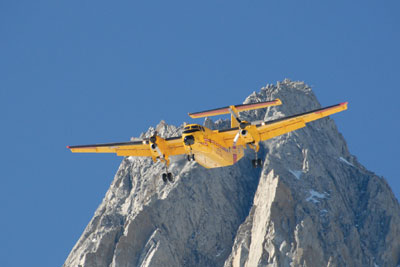 |
|
| The current CC-115 Buffalo can accommodate a fully loaded F-350 size pickup truck in its cargo bay and with a change of less than an inch, the Buffalo NG could accept the standard NATO 108 pallet and still operate from landing zones the size of soccer fields, making it interoperable with the C-130J and C-17. Photo: RCAF
|
An information session was held in Ottawa Oct. 17-19 where the feds outlined the steps in the procurement process, the structure of the request for proposals, as well as details about the in-service support requirements. This will be followed by one-on-one meetings between government and industry representatives.
The process has dragged on for years dogged by controversy after the original statement of operational requirements (SOR) gave every indication of having been written based on the capabilities of one particular aircraft rather than considering the potential mission(s).
Appearing before the Senate Committee on National Security and Defence this past March, then-commander of the RCAF and Chief of the Air Staff, Lt.-Gen. André Deschamps told the senators that the RCAF will continue its long tradition of excellence, touching on the control of Canadian airspace, interoperability with our allies and the ability to respond quickly to events at home and abroad, with particular emphasis on the growing importance of the Canadian Arctic.
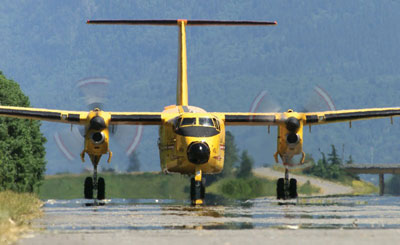 |
|
| Viking has received strong support from around the world for the NG Buffalo but, as Viking CEO Dave Curtis says, the only true indicator of the customer’s desire is when they give you a cheque. Photo: RCAF |
Said Deschamps: “[We will provide] one of the best search and rescue capabilities in the world . . . the RCAF has proven its ability to deliver robust air power and – with our ongoing modernization – I am confident that we will continue to provide the high degree of service that Canadians expect from us, in a fiscally responsible manner.”
A report released by the Rideau Institute and the Canadian Centre for Policy Alternatives in June of this year entitled Search and Replace: The Case for a Made-in-Canada Fixed-Wing Search and Rescue Fleet, called on the government to replace the Canadian Fixed-Wing Search and Rescue (FWSAR) fleet in a timely and objective manner, and proposed that Canadian-built aircraft be considered to fulfill this country’s search and rescue requirements, especially on the West Coast. The report was written by Michael Myers, a University of British Columbia political science professor, Michael Byers, and Stewart Webb, research associate at the Salt Spring Forum. It makes three recommendations to the government as they prepare to address Canada’s FWSAR aircraft:
- The Canadian government should clearly articulate a statement of operational requirements (SOR) for fixed-wing search and rescue aircraft that recognizes the different requirements on Canada’s West Coast and the necessity of a mixed fleet.
- The Canadian government should ensure the SOR does not preclude consideration of made-in-Canada aircraft.
- The Canadian government should conduct a transparent competition that will provide the Canadian Forces with effective FWSAR aircraft at the best value to Canadians in terms of cost, performance, and jobs.
The report emphasizes the need for a clear and open process for acquiring the aircraft, citing the lack of transparency surrounding the F-35. Without a clearly stated SOR outlining the performance specifications that the aircraft must be able to achieve, there is no ability for the media and general public to understand the process. Byers also noted that transparency is important “so the requirements do not exclude Canadian-built planes that are proven, affordable and quickly available.”
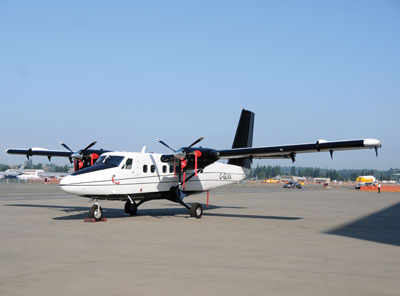 |
|
| Vikings’ Series 400 Twin Otter is a strong contender for the FWSAR contract in tandem with the Next Gen Buffalo. This Series 400 Twin Otter sports the colours of the U.S. Army Golden Hawks parachute demonstration team. Photo: PAUL DIXON
|
The subtitle to Search and Replace is “The Case for a Made-in-Canada Fixed-Wing Search and Rescue Fleet.” As long ago as 2008, Viking CEO Dave Curtis spoke publicly about his company being ready, willing and able to upgrade the current CC-115 Buffalo aircraft in service, as well as embark on production of the DHC-5NG (next-generation) Buffalo to meet future needs.
In January 2009, Viking released a document that outlined the development of the CC-115 Buffalo as operated by the RCAF, the C-27J Spartan, which was the only aircraft that appeared to meet the initial SOR released by the military in 2004 and Viking’s proposed DHC-5NG. The NG Buffalo would follow on Viking’s successful relaunch of the Twin Otter with the Series 400 incorporating cutting technology on the flight deck with a proven, robust aircraft.
Another option, which apparently is still being considered, is “alternate service delivery” (ASD) or partial privatization of SAR, which would appeal to the federal government’s drive to reduce spending. In an interview with Wings earlier this year, Rob Mauracher, VP of business development with Victoria, B.C.-based Viking Air, said Viking had indeed submitted a proposal to the federal government that would see Viking take over operations of fixed-wing SAR for the entire country with a mix of C-130J, DHC-5NG and DHC-6-400 aircraft.
“Our board is prepared to buy the whole package, lease it to the government and operate the aircraft. DND would manage the co-ordination centre, dispatch the aircraft and SAR techs and the rest would be managed by the public sector,” said Mauracher.
Adding the Series 400 Twin Otter to the SAR fleet hasn’t been in the mix until now. While the aircraft is definitely much smaller than the Buffalo and the Hercules, the appropriate question is how does it stack up against the profile of the missions, especially when considering the widely varying geography and flying conditions across the country? For decades, Twin Otters have been flown by military operators under the most harsh and demanding conditions around the world, from the Amazon jungle, across the deserts of Africa and the Middle East to the South Pole. Now, as smaller countries are recoiling from the “sticker shock” of larger military aircraft, countries such as Peru and Vietnam are turning to the Series 400 Twin Otter as a long-range maritime patrol aircraft, outfitted with internal long-range tanks and a full suite of high-tech sensors.
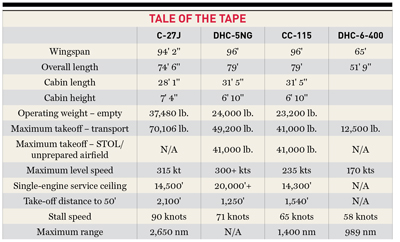 |
|
The Twin Otter is also a proven platform for parachute operations. For the past 10 years, the BC Wildfire Management Branch has operated a smokejumper or Paratack program out of Fort St. John in northern British Columbia, utilizing Twin Otter aircraft operated by Kenn Borek Air Ltd. of Calgary. The planes are configured for a pilot, command spotter, two three-person jump teams, as well as two 1,400-pound equipment bundles. The U.S. Army has purchased three Series 400 Twin Otters for their Golden Knights parachute demonstration team.
Building on the success of the Twin Otter Series 400, the DHC-5NG would take the proven design of the Buffalo, add new engines and propellers along with a 21st century cockpit and instrumentation. Though Mauracher expressed some uncertainty about finding the “right” engine for the Buffalo NG, it appears that Viking has settled on the PW-150 turboprop engine, prop and nacelle of the Bombardier Q400 as the best solution.
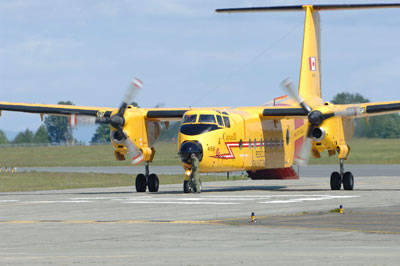 |
|
| The CC-115 Buffalo has a long history of providing dependable service under extreme conditions. Photo: RCAF
|
The current CC-115 Buffalo can accommodate a fully loaded F-350 size pickup truck in its cargo bay and with a change of less than an inch, the Buffalo NG could accept the standard NATO 108 pallet and still operate from landing zones the size of soccer fields, making it interoperable with the C-130J and C-17. This would allow the RCAF to move supplies around the world, in theatre and to the schoolyard down the street, in a seamless operation.
The Twin Otter and Buffalo have long histories of providing dependable service under extreme conditions. The aircraft are robust, simple to fly, and designed for harsh environments and physically demanding operating conditions. They also don’t have the problems with wing replacements and cracks that larger aircraft experience.
While assessing the market potential for the Series 400 Twin Otter, Viking had received strong support from around the world for the NG Buffalo, but, as Curtis said at the time, the only true indicator of the customer’s desire is when they give you a cheque. Now, with the Series 400 Twin Otter fully airborne and four years of orders on the books, Viking is taking a big step towards the Buffalo NG.
At this year’s Farnborough Air Show, Viking’s Mauracher announced that the company had commissioned a market study to determine customer demand and fully assess the feasibility of building the new aircraft. The study will be complete later this year and Maraucher said the company is prepared to operate “very quickly” if necessary. Time will tell if the next step is a call from the DND to set the plan in motion.